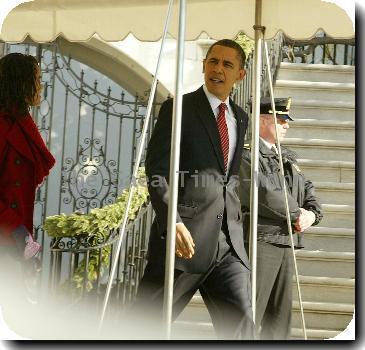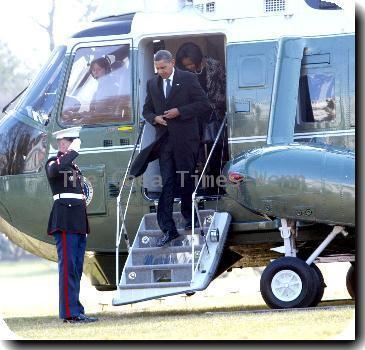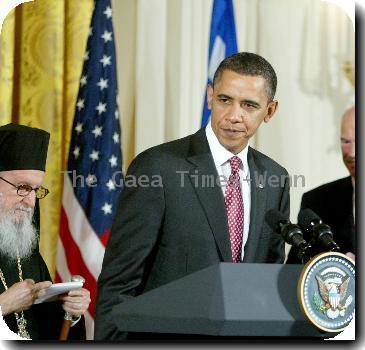European countries resume some air travel in zones safe from Icelandic volcano’s ash
By Slobodan Lekic, APMonday, April 19, 2010
Europe resumes some air travel despite volcano
LONDON — Europe began to emerge from a volcanic cloud Monday, allowing limited air traffic to resume and giving hope to millions of travelers stranded around the world when ash choked the jet age to a halt.
Even then, however, the eruption from the Icelandic volcano that caused the five days of aviation chaos was said to be strengthening and sending more ash toward Britain, which could make it unlikely that London airports would reopen Tuesday.
Three KLM passenger planes left Schiphol airport in Amsterdam on Monday evening during daylight under visual flight rules bound for New York, Dubai and Shanghai. An Associated Press photographer saw one jet taking off into a colorful sunset, which weather officials said was pinker than normal due to the ash.
European Union transport ministers reached a deal during a crisis videoconference to divide northern European skies into three areas: a “no-fly” zone immediately over the ash cloud; a caution zone “with some contamination” where planes can fly subject to engine checks for damage; and an open-skies zone.
Starting Tuesday morning, “we should see progressively more planes start to fly,” said EU Transport Commissioner Siim Kallas.
The German airline Lufthansa said it would bring 50 planeloads of passengers home.
But the optimism was tempered Monday night by a statement from the British National Air Traffic Service, which said the eruption of the volcano has strengthened and a new ash cloud was spreading toward Britain.
The service said airspace over some parts of England may be reopened Tuesday afternoon but that the open zone for flights may not extend as far south as London, where the country’s main airports are located. It also indicated that Scotland’s airports and airspace can reopen as planned Tuesday morning but said the situation in Northern Ireland was uncertain.
Europe’s aviation industry — facing losses of more than $1 billion — criticized official handling of the disruption that grounded thousands of flights to and from the continent.
Visual flight rules allow a pilot to fly without reference to instruments, if weather conditions are good enough so the pilot can see landmarks and avoid any other aircraft. Those flights need to be under 18,000 feet, lower than usual altitude for commercial traffic.
Scientists have instruments that can both detect the presence of the ash and measure its concentration — information that can be relayed to pilots.
The airlines said test flights in recent days by airlines including KLM, Lufthansa and British Airways suggested planes can fly safely despite the ash. None of the flights reported problems or damage.
“The analysis we have done so far, alongside that from other airlines’ trial flights, provides fresh evidence that the current blanket restrictions on airspace are unnecessary,” said BA chief executive Willie Walsh. “We believe airlines are best positioned to assess all available information and determine what, if any, risk exists to aircraft, crew and passengers.”
Scientists and pilots urged caution.
“Mixing commercial and safety decisions risks lives,” said Philip von Schoppenthau, secretary-general of the European Cockpit Association, a union representing 38,200 pilots from 36 European nations.
“Our members have many firsthand experiences of the extremely abrasive and clogging effects of such clouds,” he said.
Millions of travelers have been stuck since the volcano under Iceland’s Eyjafjallajokull glacier begun erupting April 14 for the second time in a month, spewing a vast cloud of ash that has drifted over most of northern Europe and is now spreading west toward North America.
White House press secretary Robert Gibbs said about 40,000 Americans in Britain were stranded abroad, citing Louis Susman, the U.S. ambassador to Britain.
“We are working closely with the State Department to examine all the opportunities that we have to speed this process along, understanding that people — you know, some people, maybe, may have gone on vacation,” Gibbs said. “They’re running out of medicine. They don’t have a place to stay.”
Eurocontrol, the air traffic agency in Brussels, said less than one-third of flights in Europe were taking off Monday — between 8,000 and 9,000 of the continent’s 28,000 scheduled flights. Officials said more would operate Tuesday — although it wasn’t immediately clear how many.
German Transport Minister Peter Ramsauer said all planes under the “control zone” plan will be thoroughly checked once they’ve landed.
“Much stricter tests and checks will be applied to all planes,” Ramsauer said, in hopes of gaining more data about the risk from the ash. “Nobody knows how long the situation will continue.”
Airports in central Europe and Scandinavia have reopened, and most of southern Europe remained clear, with Spain volunteering to be a staging-point for overseas travelers trying to get home. Infrastructure Minister Jose Blanco said Spain could to take in around 100,000 people under the new emergency plan, which focuses on trying to bring Britons home from Asia, Latin America and North America.
As British schools reopened after the Easter break with empty desks and missing teachers — thanks to an estimated 150,000 Britons stranded abroad — authorities resorted to extraordinary measures.
The government said it was sending three Royal Navy warships, including the aircraft carrier HMS Ark Royal, across the English Channel to bring home stranded citizens. One ship was heading to Spain to pick up soldiers trying to get back to Britain after a tour of duty in Afghanistan.
British Prime Minister Gordon Brown said the ash cloud had created “the biggest challenge to our aviation transport network for many years,” and European officials said the disruption was worse than that caused by the Sept. 11 attacks.
Tensions boiled over among frustrated passengers at Incheon International Airport in South Korea, where 30 people blocked a Korean Air ticketing counter and demanded officials arrange travel to anywhere in Europe after hearing about the test flights.
“We need a flight, we need a time,” Thierry Loison, who has been stuck at the airport since Friday on the way back to France, told Korean Air officials. “We were like animals this morning.”
Others complained of rail fares that rose suddenly and hotel rates that tripled overnight. Graham Wishart, 65, stuck in London when his flight to Toronto was canceled, said his hotel bill had gone from 68 pounds ($104) to 189 pounds ($289) a night.
“People are raking in dough here from people who are stuck as a result of this natural disaster,” he said. “It’s just not right.”
A spokeswoman for Canada’s environmental department said part of the ash cloud is moving southwest of Iceland, but should not affect Canadian airports. Some flights were canceled at an airport in the eastern province of Newfoundland, although normal schedules were resumed after later data suggested the ash was having no impact on Canada’s east coast.
Critics said the coordinated action among European officials came too late.
“It’s embarrassing and a European mess,” said Giovanni Bisignani, chief executive of the International Air Transport Association.
The IATA accused European governments of offering “no risk assessment, no consultation, no coordination, and no leadership.” The group urged governments to more urgently “focus on how and when we can safely reopen Europe’s skies” — such as through more in-depth study of the ash cloud to identify safe corridors for planes.
Ash and grit from volcanic eruptions can sabotage a plane in many ways: the abrasive ash can sandblast a jet’s windshield, block fuel nozzles, contaminate the oil system and electronics and plug the tubes that sense airspeed. But the most immediate danger is to the engines. Melted ash can then congeal on the blades and block the normal flow of air, causing engines to shut down.
Airlines said the test flights showed the danger was exaggerated. But a senior Western diplomat said Monday that several NATO F-16 fighters suffered engine damage after flying through the ash.
The official declined to provide more details on the military flights, except to say that glasslike deposits were found inside the planes’ engines after they patrolled over European airspace.
The crisis caused by the volcano has hit everyone from Icelandic fisherman — unable to transport their catches abroad — to Kenyan farmers whose Europe-bound produce sits rotting in warehouses.
In addition to forcing President Barack Obama to cancel plans to attend the state funeral of Polish President Lech Kaczynski, the ash also caused U.S. Secretary of State Hillary Rodham Clinton to call off a scheduled trip to Finland.
The ash also forced the postponement until next week of a much-anticipated visit to Russia by a team of U.S. officials who were to discuss Russian concerns about adoptions.
The most immediate impact has been on airlines, already struggling because of the recession-induced travel downturn.
IATA estimated the industry was losing $200 million a day. British Airways said it was losing up to 20 million pounds ($30 million) a day. Other airlines were also racking up huge losses.
Lawless reported from London, Lekic from Brussels; also contributing were Associated Press writers Raf Cassert in Brussels; Geir Moulson and Melissa Eddy in Berlin; Angela Charlton and Jamey Keaten in Paris; Karl Ritter in Stockholm, Jennifer Quinn, Robert Barr and Danica Kirka in London; Carlo Piovano in Reykjavik; Kelly Olsen in South Korea; Toby Sterling, Arthur Max and Mike Corder in Amsterdam; Rob Gillies in Toronto; Malin Rising in Stockholm; and Matthew Lee in Washington.
Tags: Air Travel, Amsterdam, Asia, Barack Obama, Belgium, Brussels, Canada, East Asia, England, Europe, Funerals And Memorial Services, Iceland, London, Netherlands, North America, Ontario, South Korea, Spain, State Funerals, Toronto, United Kingdom, United States, Western Europe





